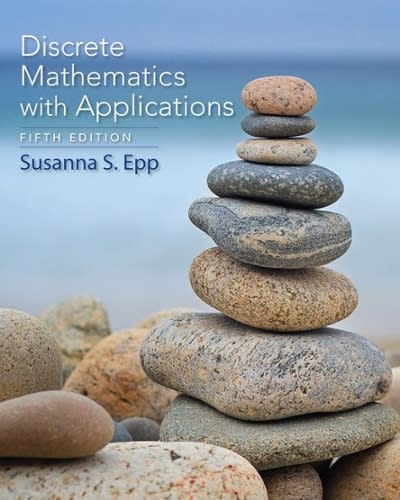Question
(i) Let x = age in years of a rural Quebec woman at the time of her first marriage. In the year 1941, the population
(i) Letx= age in years of a rural Quebec woman at the time of her first marriage. In the year 1941, the population variance ofxwas approximately2= 5.1. Suppose a recent study of age at first marriage for a random sample of31women in rural Quebec gave a sample variances2=2.5.Use a 5% level of significance to test the claim that the current variance is less than 5.1.
(a)Find the value of the chi-square statistic for the sample. (Round your answer to two decimal places.)
(b) What assumptions are you making about the original distribution?
- We assume a binomial population distribution.
- We assume a normal population distribution.
- We assume a exponential population distribution.
- We assume a uniform population distribution.
(c)Find or estimate theP-value of the sample test statistic.
- P-value > 0.100
- 0.050 <P-value < 0.100
- 0.025 <P-value < 0.050
- 0.010 <P-value < 0.025
- 0.005 <P-value < 0.010
- P-value < 0.005
(d)Based on your answers in parts (a) to (c), will you reject or fail to reject the null hypothesis?
- Since theP-value >, we fail to reject the null hypothesis.
- Since theP-value >, we reject the null hypothesis.
- Since theP-value, we reject the null hypothesis.
- Since theP-value, we fail to reject the null hypothesis.
(ii) Letxrepresent the average annual salary of college and university professors (in thousands of dollars) in the United States. For all colleges and universities in the United States, the population variance ofxis approximately2= 47.1. However, a random sample of17colleges and universities in Kansas showed thatxhas a sample variances2=81.7.Use a 5% level of significance to test the claim that the variance for colleges and universities in Kansas is greater than 47.1.
(a) Find the value of the chi-square statistic for the sample. (Round your answer to two decimal places.)
(b) What assumptions are you making about the original distribution?
- We assume a binomial population distribution.
- We assume a uniform population distribution.
- We assume a normal population distribution.
- We assume a exponential population distribution.
(c)Find or estimate theP-value of the sample test statistic.
- P-value > 0.100
- 0.050 <P-value < 0.100
- 0.025 <P-value < 0.050
- 0.010 <P-value < 0.025
- 0.005 <P-value < 0.010
- P-value < 0.005
(d)Based on your answers in parts (a) to (c), will you reject or fail to reject the null hypothesis?
- Since theP-value >, we fail to reject the null hypothesis.
- Since theP-value >, we reject the null hypothesis.
- Since theP-value, we reject the null hypothesis.
- Since theP-value, we fail to reject the null hypothesis.
Step by Step Solution
There are 3 Steps involved in it
Step: 1

Get Instant Access to Expert-Tailored Solutions
See step-by-step solutions with expert insights and AI powered tools for academic success
Step: 2

Step: 3

Ace Your Homework with AI
Get the answers you need in no time with our AI-driven, step-by-step assistance
Get Started


